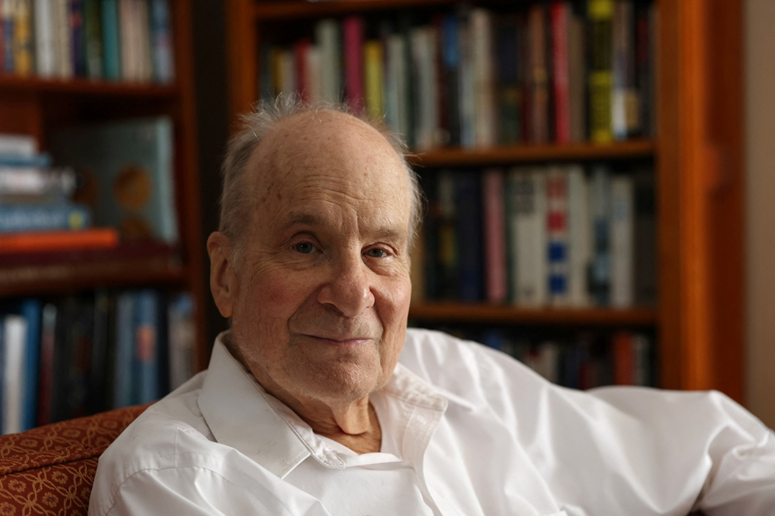Discoveries of Chemistry Nobel laureates make 'life colorful'

Members of the Nobel Prize Awarding Body in Chemistry announce the winner of the Nobel Prize in Chemistry. Boundy and Lewis E. Bruce and Alexei I. Ekimov won the award in Stockholm. October 4, 2023. –
The Royal Swedish Academy of Sciences announced, on Wednesday, that French scientist of Tunisian origin Mongi J. Boundy, and the American Louis E. Bruce, and the Russian Alexei I. Ekimov won the 2023 Nobel Prize in Chemistry.
The Academy said that the 2023 Nobel Prize in Chemistry “was awarded in recognition of the discovery and development of quantum dots, which are nanoparticles so small that their size governs their properties.”
The prize, whose value was increased this year to 11 million Swedish krona (about one million dollars), is issued by the Royal Swedish Academy of Sciences.
How do quantum dots affect our lives?
These tiny semiconductor particles, often just a few nanometers in size, have created a buzz in the scientific community because of their unique and versatile properties. The discovery and development of quantum dots has opened the door to a wide range of applications in diverse fields such as electronics, medicine, and energy.
These tiny particles, also known as nanocrystals, are made of semiconducting materials, such as cadmium selenide or indium phosphide, and their behavior arises from the quantum confinement effect. This means that as its size shrinks, the energy levels of the electrons inside it become quantitative.
Their electronic structure and optical properties depend largely on their size, allowing scientists to engineer quantum dots with specific properties, and they can emit light of different colors, making them valuable in applications such as television screens, and even in improving the efficiency of solar cells.
It is also used to guide surgeons during the removal of cancerous tissue, and also to track biological processes at the cellular level, in addition to the possibility of using it to create nanoelectronic components, which helps in developing more powerful and energy efficient devices.

What effect do nanoparticles have on optical properties?
Physicists have long known that theoretically size-dependent quantum effects could arise in nanoparticles, but at the time it was difficult to create particles with nanometer dimensions, so many believed that this knowledge could not be applied practically.
In the early 1980s, Russian physicist Alexei Ekimov conducted pioneering research that demonstrated quantum effects on the color of glass containing copper chloride nanoparticles. This work was a major breakthrough in understanding how the size of nanoparticles affects their optical properties through quantum confinement.
Ekmov explains quantum confinement
Ekimov found that this phenomenon can be explained by a quantum confinement effect that changes the electronic structure of nanoparticles as their size shrinks, leading to quantum energy levels and thus affecting the absorption and emission of light by the particles.

Russian scientist Alexei Ekimov, winner with two scientists of the Nobel Prize in Chemistry for the year 2023 - nexdot.fr
The concept of quantum confinement is also a central principle behind the optical properties of quantum dots. When particles are reduced to nanoscale dimensions, their electronic behavior changes significantly. In the case of quantum dots, the quantum confinement effect allows fine-tuning of the color of emitted light by controlling the size of nanoparticles, and this has enabled their widespread use in applications such as displays, lighting and biomedical imaging.
Lewis Bruce... pioneer of quantum effects
A few years later, American Louis Bruce became the first scientist to demonstrate size-dependent quantum effects in particles floating freely in a liquid. In colloidal solutions, nanoparticles are dispersed in a liquid medium, allowing them to move freely.

American scientist Louis Bruce won the Nobel Prize in Chemistry with two other scientists. October 4, 2023 – undefined
Bruce's research showed that the optical properties of these nanoparticles, such as their absorption and emission of light, were strongly dependent on their size. This was a crucial discovery because it provided experimental evidence of the effects of quantum confinement in nanoparticles suspended in a liquid.
Bruce's work on colloidal quantum dots expanded our understanding of how the quantum confinement effect works in nanomaterials. When the size of a semiconductor nanoparticle approaches the nanometer scale, the electrons within it are confined to discrete energy levels and this leads to quantum energy states.
The most notable result of this research was the ability to control the color of light emitted from these colloidal quantum dots by adjusting their size. This property has become the basis for the development of quantum dot-based technologies, including quantum dot displays, LED lighting, and others.
Boundy and the chemical production revolution
In 1993, Frenchman of Tunisian origin Mongi Baoundy revolutionized the chemical production of quantum dots, resulting in the production of almost perfect particles that provide high quality for use in applications.

French scientist Mongi-Baoundy won with two scientists the Nobel Prize in Chemistry for the year 2023 - Reuters
His major contributions included the development of new synthetic methods and techniques known as “surface passivation” that allowed precise control of quantum dot size, shape, and composition.
These developments address some of the challenges that previously prevented the practical use of quantum dots, such as variation in particle size and stability.
Source: websites

